
Blue-winged Olives
Baetis
Tiny Baetis mayflies are perhaps the most commonly encountered and imitated by anglers on all American trout streams due to their great abundance, widespread distribution, and trout-friendly emergence habits.
Featured on the forum
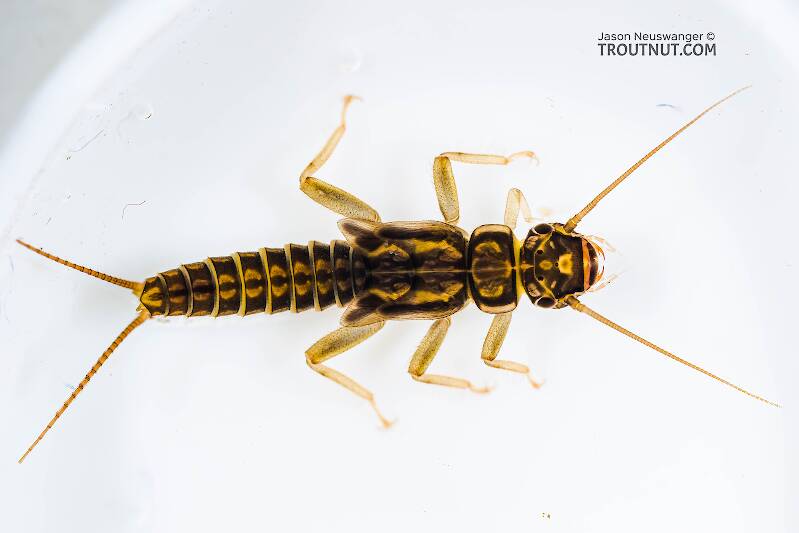

Troutnut is a project started in 2003 by salmonid ecologist Jason "Troutnut" Neuswanger to help anglers and
fly tyers unabashedly embrace the entomological side of the sport. Learn more about Troutnut or
support the project for an enhanced experience here.
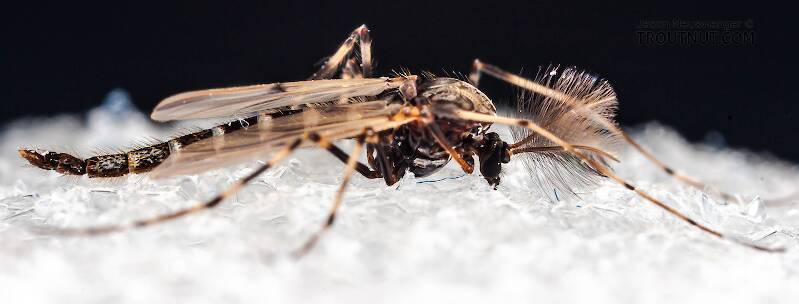
This midge and several like it, including a female I also photographed, hatched from larvae which were living in some fine mud I'm using as substrate in my bug-rearing aquarium.
Joec on Mar 21, 2008March 21st, 2008, 7:54 am EDT
Spring can't arrive soon enough...after ice-out streamer fishing and before the high water levels on moving water venues become more reasonable, I love to fish chironomid imitations in ponds. In ponds containing few forage fish, this begins before the ice goes out entirely. My question is simple: why are chironomid species in the East so much smaller than out West? I have fished the Kamloops area of BC which is, of course, world renown for huge (size and quantity)chironomid hatches and the difference is unbelievable. I suspect it has to do with lack of fertility in my home waters, still or otherwise. Can anyone help?
Taxon on Mar 21, 2008March 21st, 2008, 8:59 am EDT
Joe-
There are ~189 genera and ~1233 species of family Chironomidae in North America. My belief is, the extremely large chironomid species referred to as "Bombers" in British Columbia are not present in eastern North America. Of course, this begs the question, why not? And, although I really don't know for certain, I would speculate that, the unique combination of geology and climate they require is simply not found in the East.
There are ~189 genera and ~1233 species of family Chironomidae in North America. My belief is, the extremely large chironomid species referred to as "Bombers" in British Columbia are not present in eastern North America. Of course, this begs the question, why not? And, although I really don't know for certain, I would speculate that, the unique combination of geology and climate they require is simply not found in the East.
Sayfu
Posts: 560
Posts: 560
Sayfu on Aug 12, 2012August 12th, 2012, 1:06 pm EDT
Bombers? I had the notion they were called "buzzers", but my memory is terrible. Anyway, I find them in a wide range of sizes out here in Idaho. Biguns, and very small ones in lakes . And the colors of pupa that anglers have success with during a days fishing is quite mind boggling. One guy in a float tube tells me he landed 26 on a #18 bright red pupa the week before. I went home and tied up lots of bright little red ones, and went back and got skunked. Some days they are touting purple ones. Wish I could keep it simple.
Taxon on Aug 12, 2012August 12th, 2012, 2:09 pm EDT
Hi Jere-
I believe "buzzers" to be the common name used in England for Chironomids (members of family Chironomidae).
Chironomid pupae range from under 1/8" to over 1 inch in length; the nickname "bomber" refers to the larger pupae. Phillip Rowley, BC & AB author of Fly Patterns for Stillwaters: A study of Trout, Entomology and Tying, page 11.
I believe "buzzers" to be the common name used in England for Chironomids (members of family Chironomidae).
Quick Reply
Related Discussions
Topic
Replies
Last Reply
5
Jun 22, 2012
by Falsifly
by Falsifly
Re: Finally went trout fishing, but the flora was more impressive than the fish 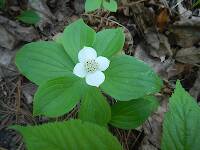
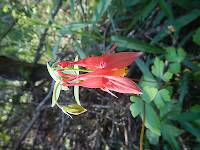
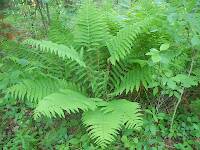
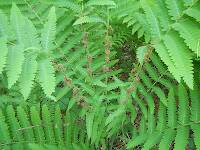
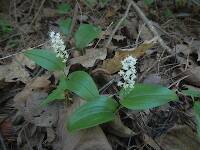
In the Photography Board by Jmd123
+ 5





In the Photography Board by Jmd123
14
Jun 17, 2018
by Summer_doug
by Summer_doug
4
Oct 24, 2009
by Keeper33
by Keeper33


